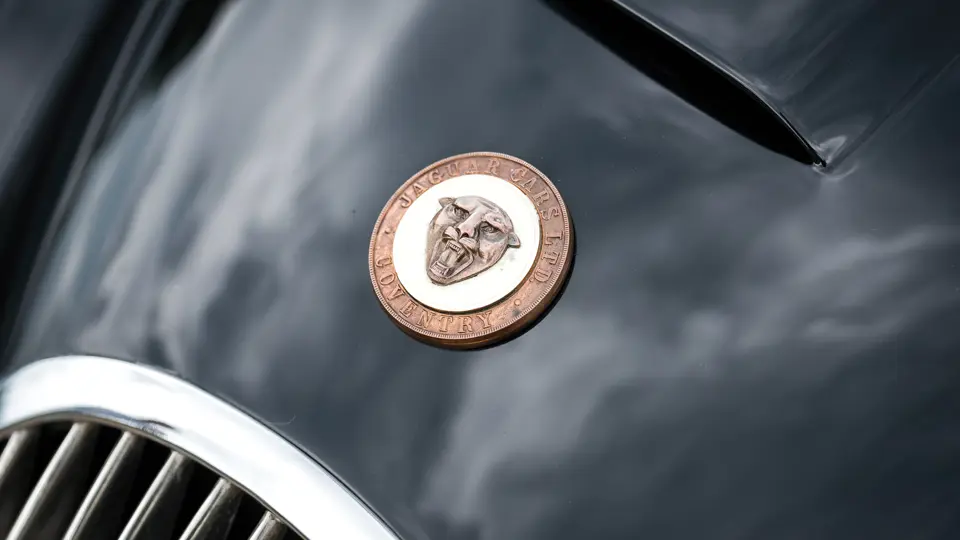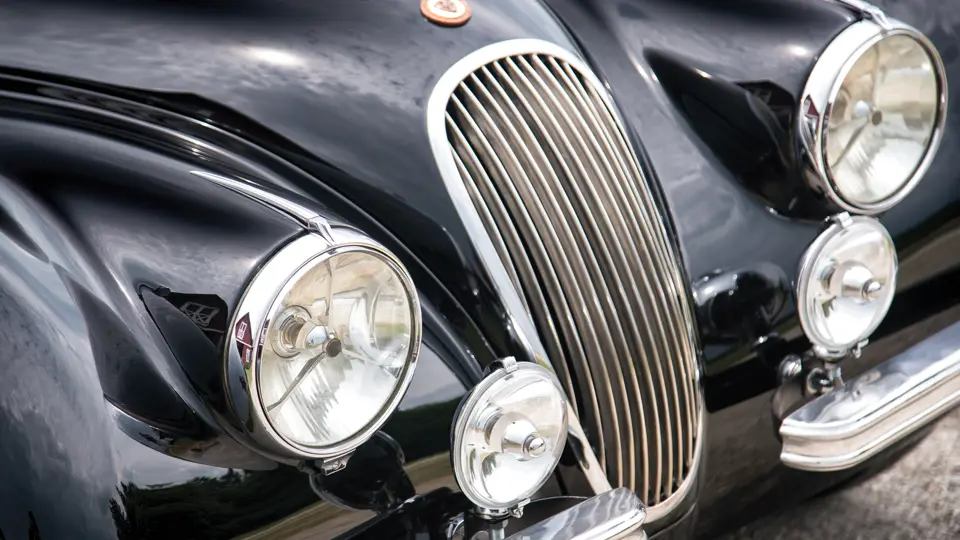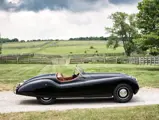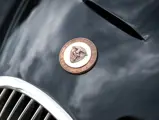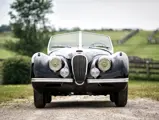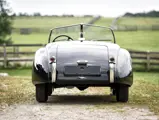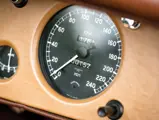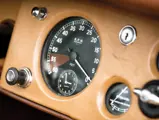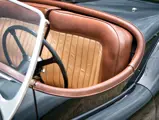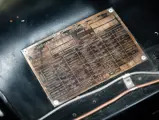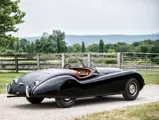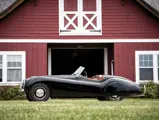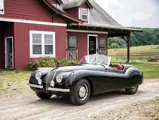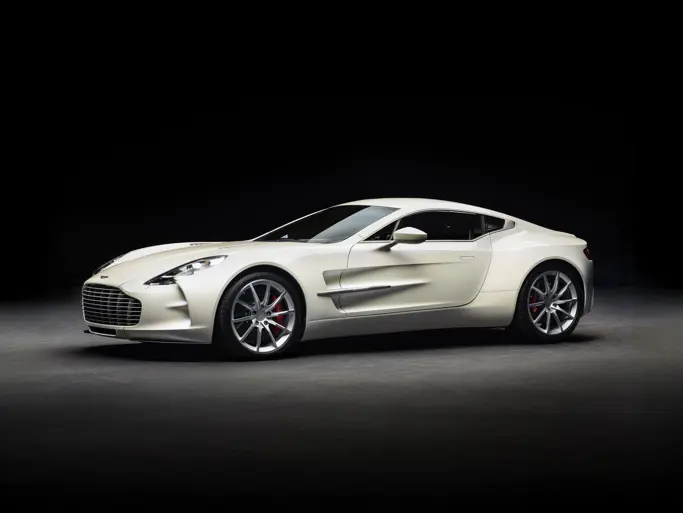
1950 Jaguar XK 120 Alloy Roadster
{{lr.item.text}}
$385,000 USD | Sold
{{bidding.lot.reserveStatusFormatted}}
- The 132nd of only 184 left-hand drive alloy XK 120 roadsters built
- Matching numbers throughout with fresh restoration
- Three owners from new with two long-term single owners
- Finished in its original colors of Black over Biscuit
190 hp, 3,442 cc DOHC six-cylinder engine with two 1¾-inch SU carburetors, four-speed manual transmission, independent front suspension with torsion bars, double wishbones and anti-roll bar, live rear axle with semi-elliptical leaf springs, and four-wheel hydraulic drum brakes. Wheelbase: 102 in.
The Jaguar XK 120 began life as the sole experimental “100” coupe, built in 1938 for the Earls Court Motor Show in London. It featured the familiar long hood and sloping tail, but bobbed fenders replaced the swooping wings of the SS 100. William Lyons modernized the idea after WWII, with flowing lines and a brand new 3.4-liter twin-cam engine. The first XK 120 was built in only six weeks for London’s 1948 Earls Court Motor Show, and it was a sensation. The first 242 cars were built with aluminum panels over a wood frame since aluminum was light and easy to work, and it was not rationed like steel. Lyons originally planned to sell 200 XK 120 OTSs (Open Two Seaters), but at only £998, orders poured in so fast that he was eventually forced to switch to steel bodies, which could be built much faster, and in large numbers.
With typically British understatement, the “120” signified the car’s top speed, and the new 3,442-cubic centimeter double-overhead camshaft, six-cylinder engine pushed the new roadster to 126.8 mph in speed trials on a public road in Jabeke, Belgium. That was half again as fast as most cars on the road in Britain. Once the top was down and the windshield removed, factory driver Ron Sutton was timed at 141.51 mph. In addition to its performance, the Jaguar’s sensuous flowing lines and sparkling performance made it a huge hit.
In all, there were 7,631 XK 120 roadsters built from 1949–1954, and 2,678 coupes between 1951 and 1954. The weather-tight drop head coupe arrived last, with 1,769 produced in 1953 and 1954. With only 242 examples bodied in aluminum, these earliest XK 120 roadsters are by far and away the most desirable examples.
According to the accompanying Jaguar Daimler Heritage Trust Certificate, the alloy roadster on offer today was built on 13 February 1950 and delivered to Jaguar Cars in Brussels, Belgium. It was finished in Black with a two-tone Biscuit leather interior, and a black convertible top. The first owner was Guy Gernay, who would own it for 28 years.
Gernay later moved to the Northeastern United States, and a photograph exists of him racing the XK 120 at Bridgehampton in the 1960s. It is believed that an air scoop was installed in the front of the hood at that time to combat engine cooling problems that afflicted XK 120s when they were raced. Wire wheels were not available until 1951, but they resolved critical brake overheating issues, and it seems likely that the black painted wires on this car were fitted at the same time. The wire wheels also required the rear fender skirts to be removed since the knock-off spinners would not fit behind the skirts. The Jaguar has since been fitted with black painted disc wheels as well as the attractive fender spats.
The second owner of 670132 was Rick Camparetto of Long Island, New York, who bought the car in 1978. He drove it for 10 years then commissioned a thorough, documented restoration of the car, assembling as many new old-stock pieces as possible and being careful to retain its original black finish and tan leather interior. The current owner acquired the car in 2014.
The consignor reports that XK 120 specialist Terry McGrath recently visited chassis number 670132 and spent two weeks studying the car in detail. Having seen most of the 242 aluminum-bodied XK 120s in person, the consignor noted that McGrath was impressed by the originality of this matching-numbers car, which is accompanied by such items as its original side screens, top frame, and skirts.
This handsome and desirable roadster is accompanied by substantial records, invoices, and a JDHT Certificate. With proven race history, the new owner can decide whether he or she wants to show the car at concours events, or compete in important historic events for which it is eligible, such as the Mille Miglia. It is bound to be welcome wherever it appears, and to deliver thrills to the driver, navigator, and spectators alike.
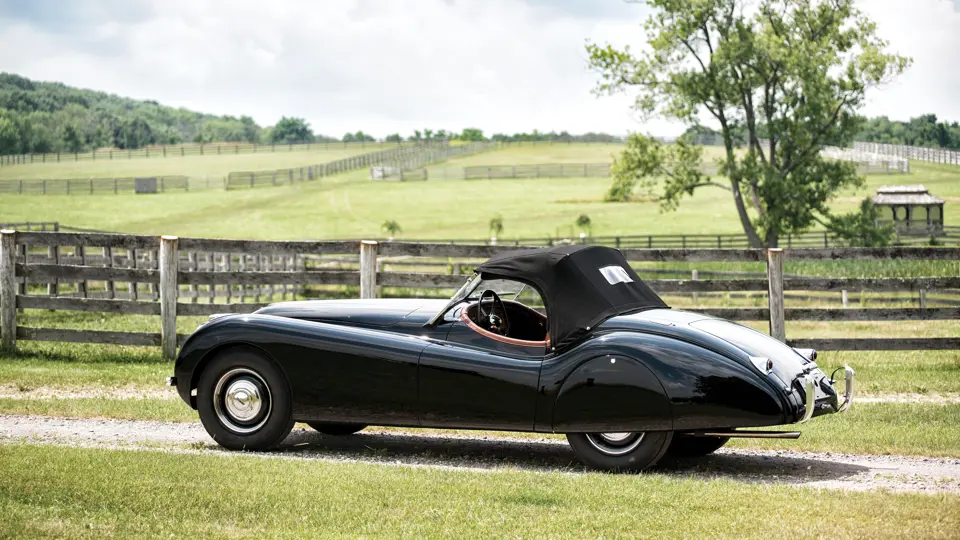

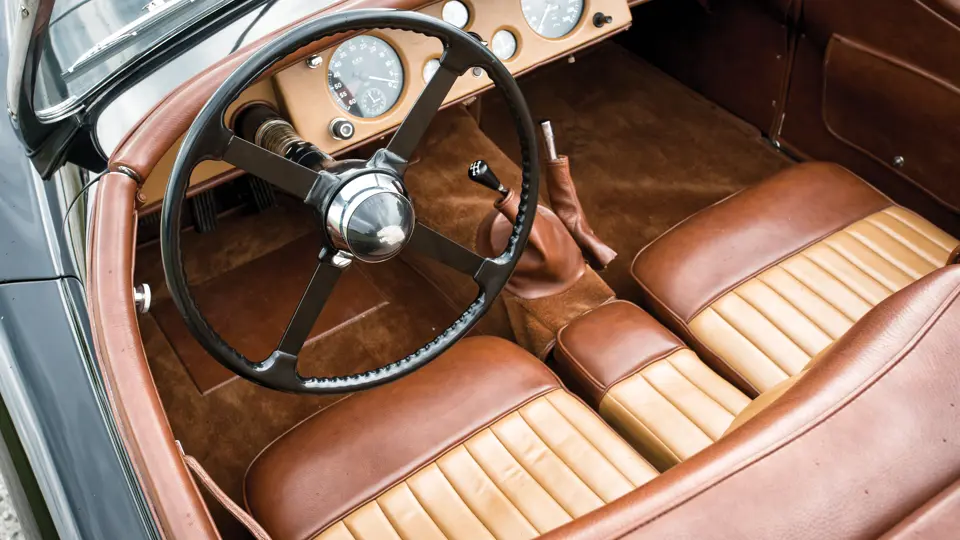

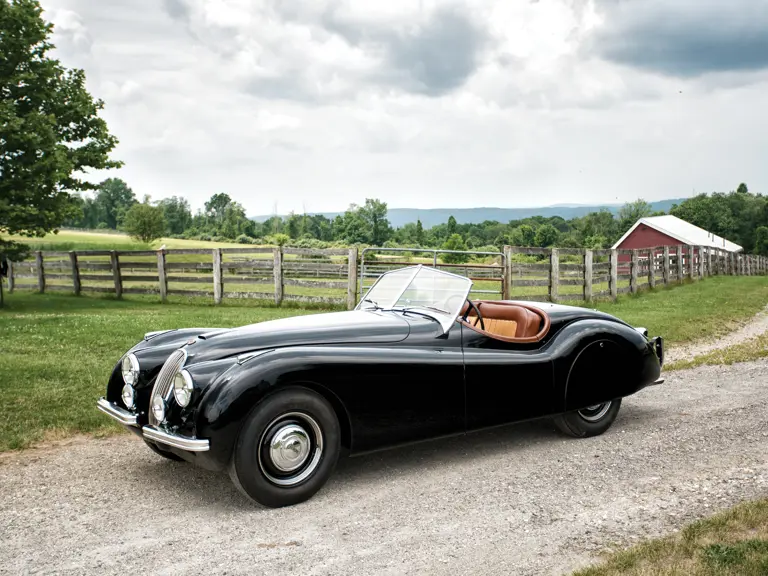
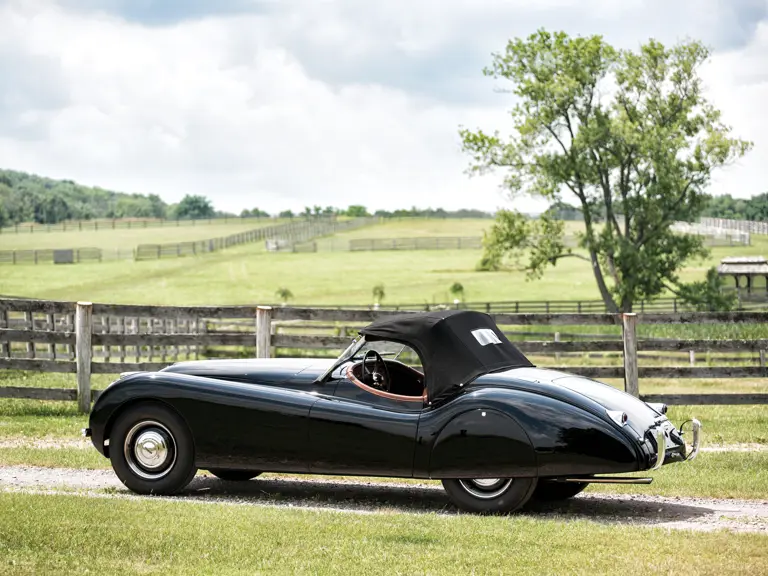
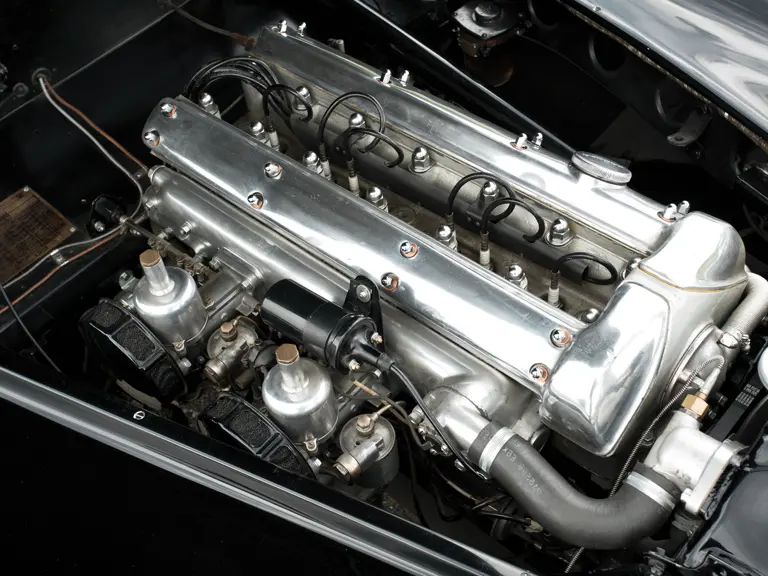

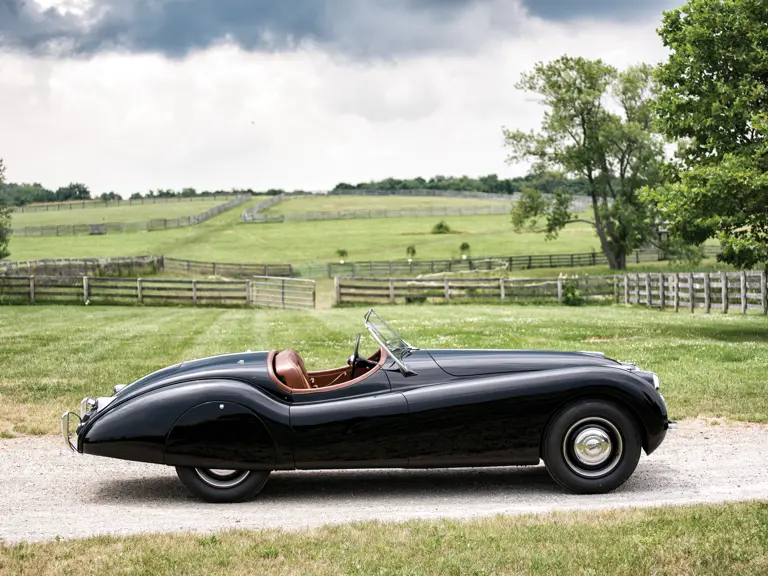
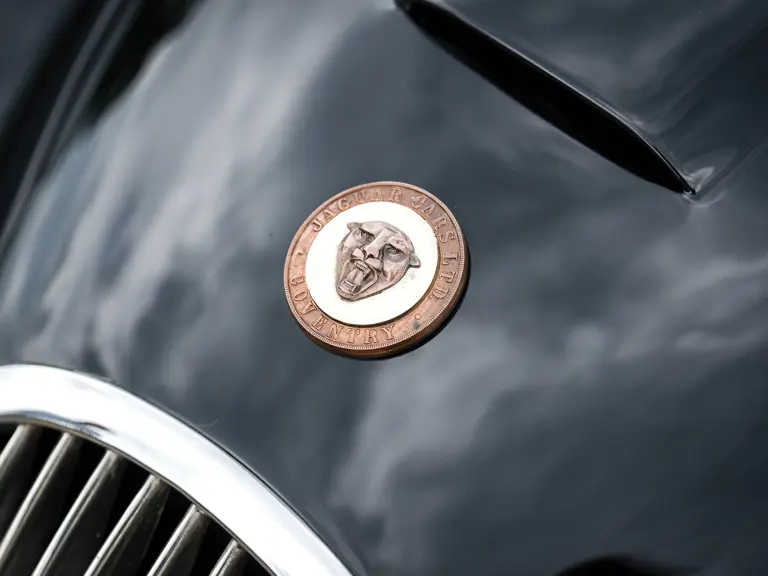
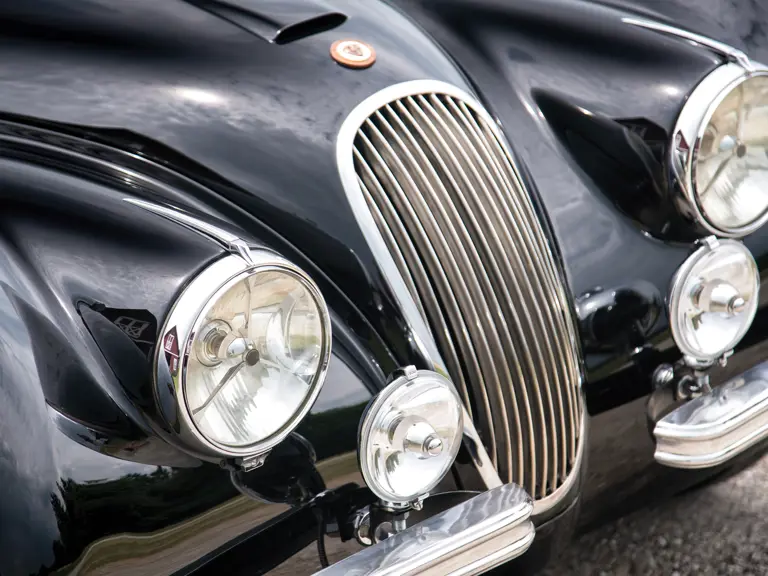
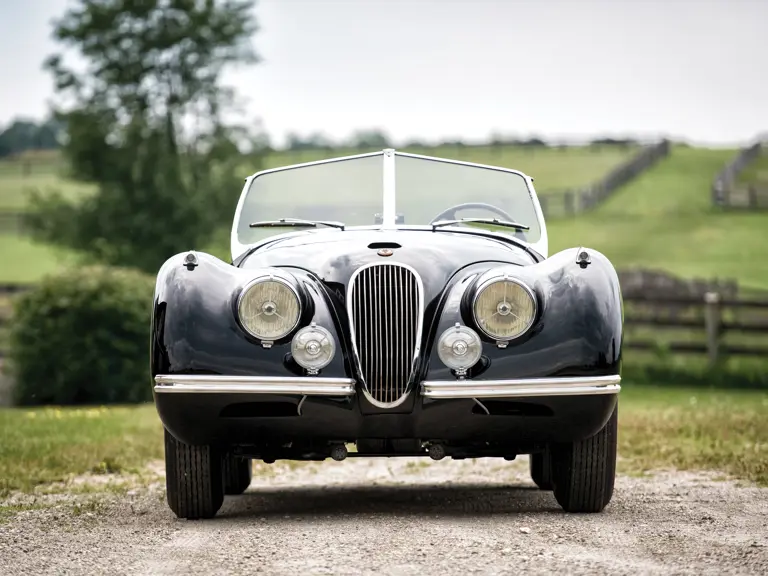
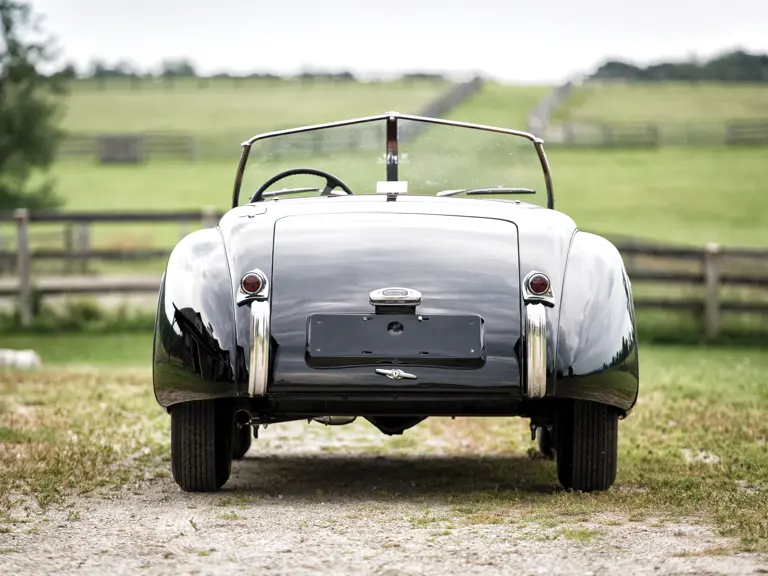
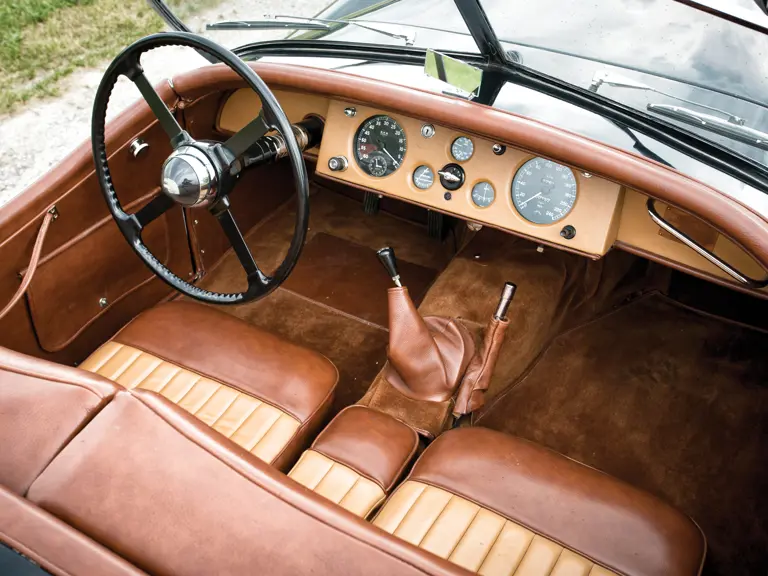
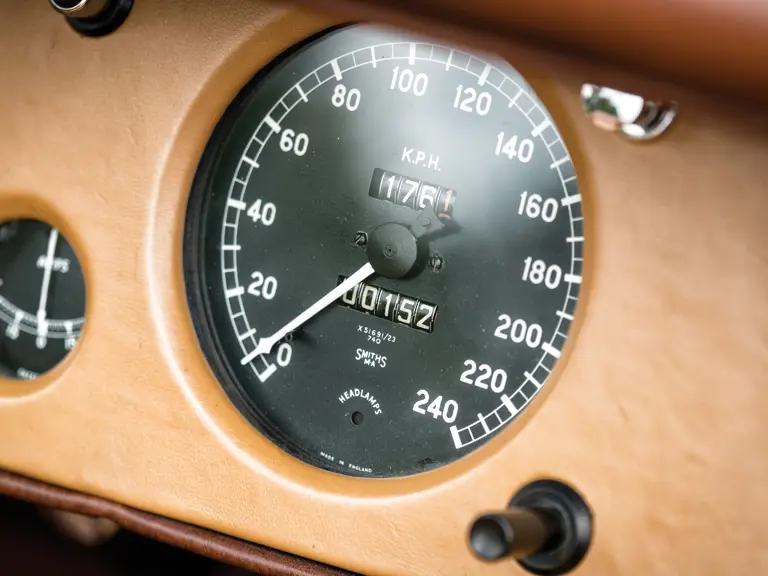

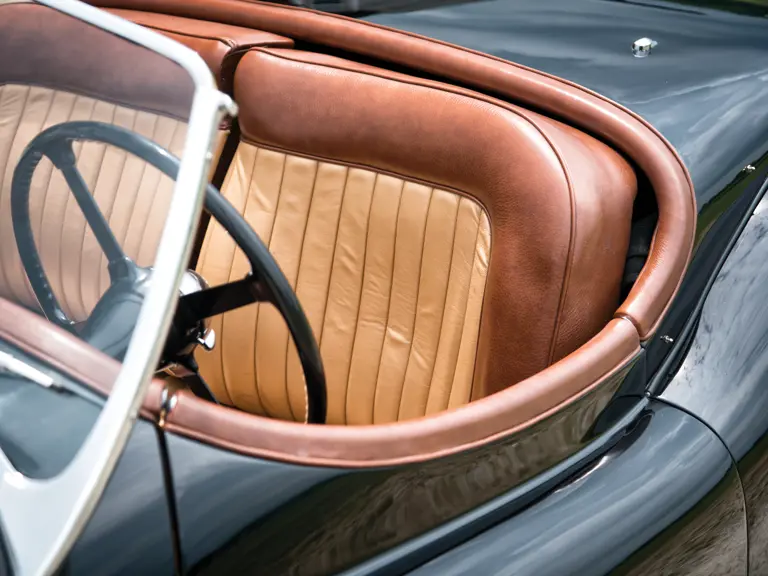


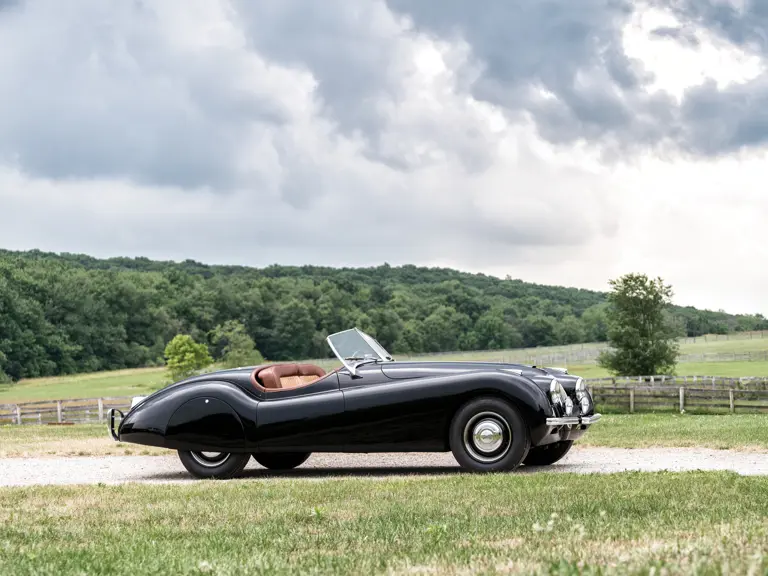
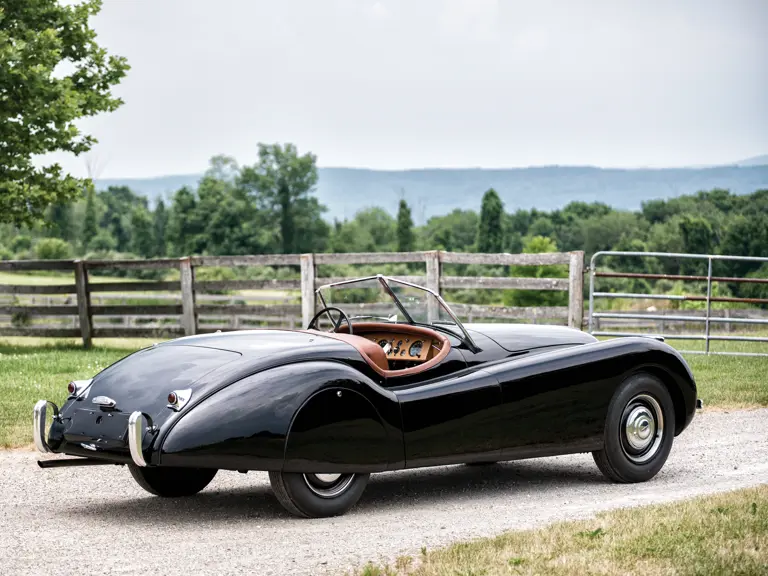

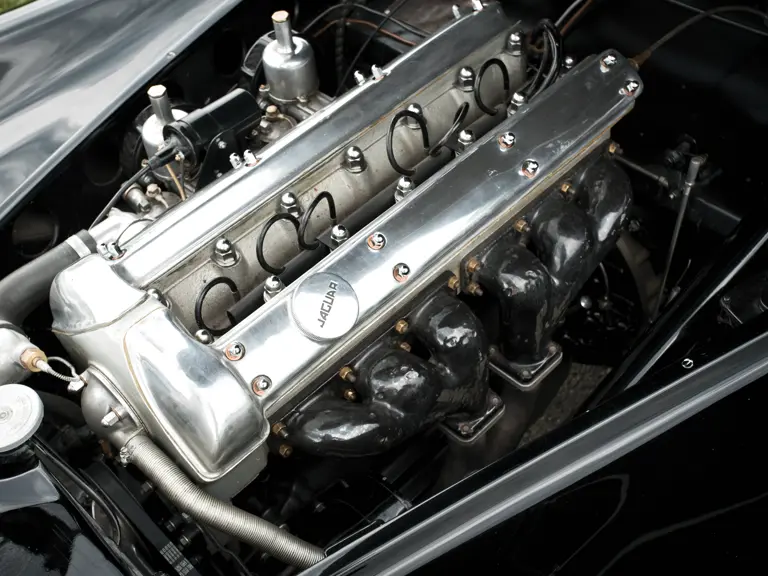
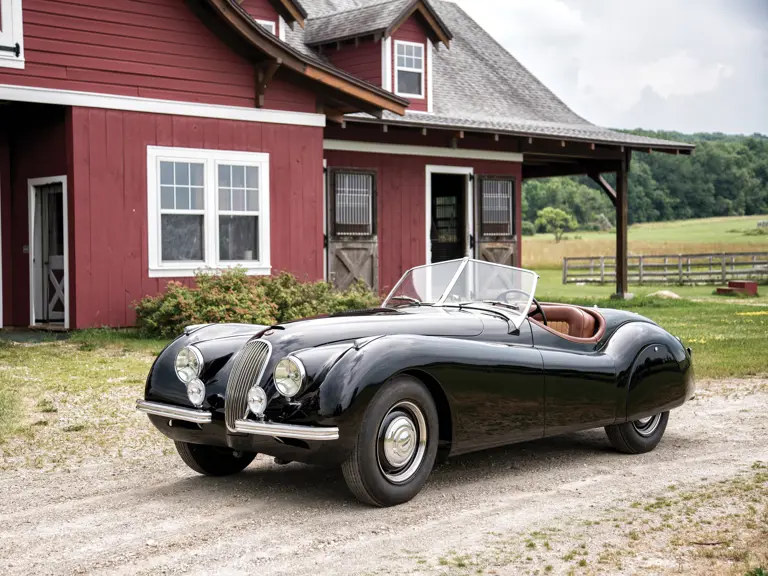
 | Monterey, California
| Monterey, California

